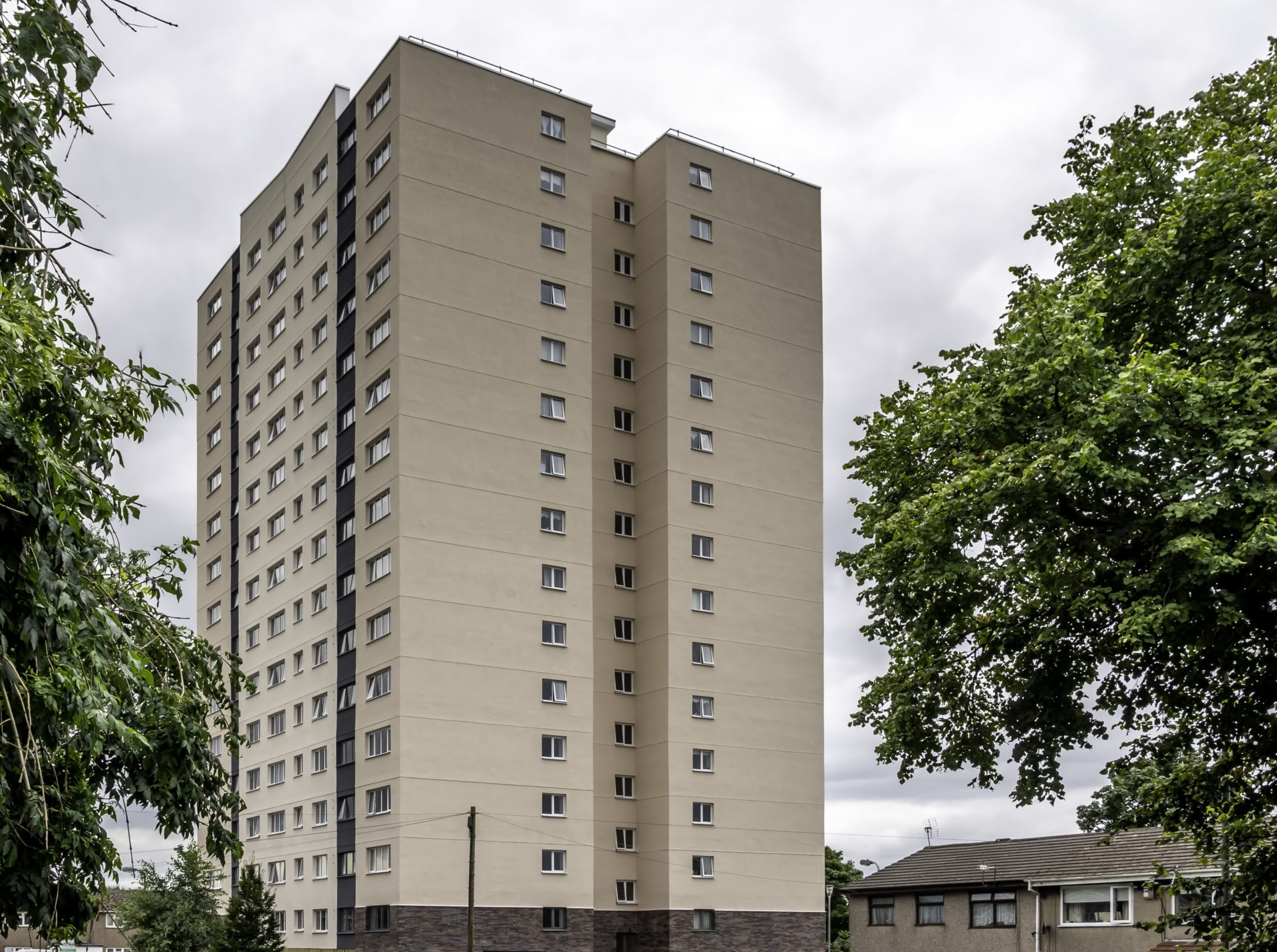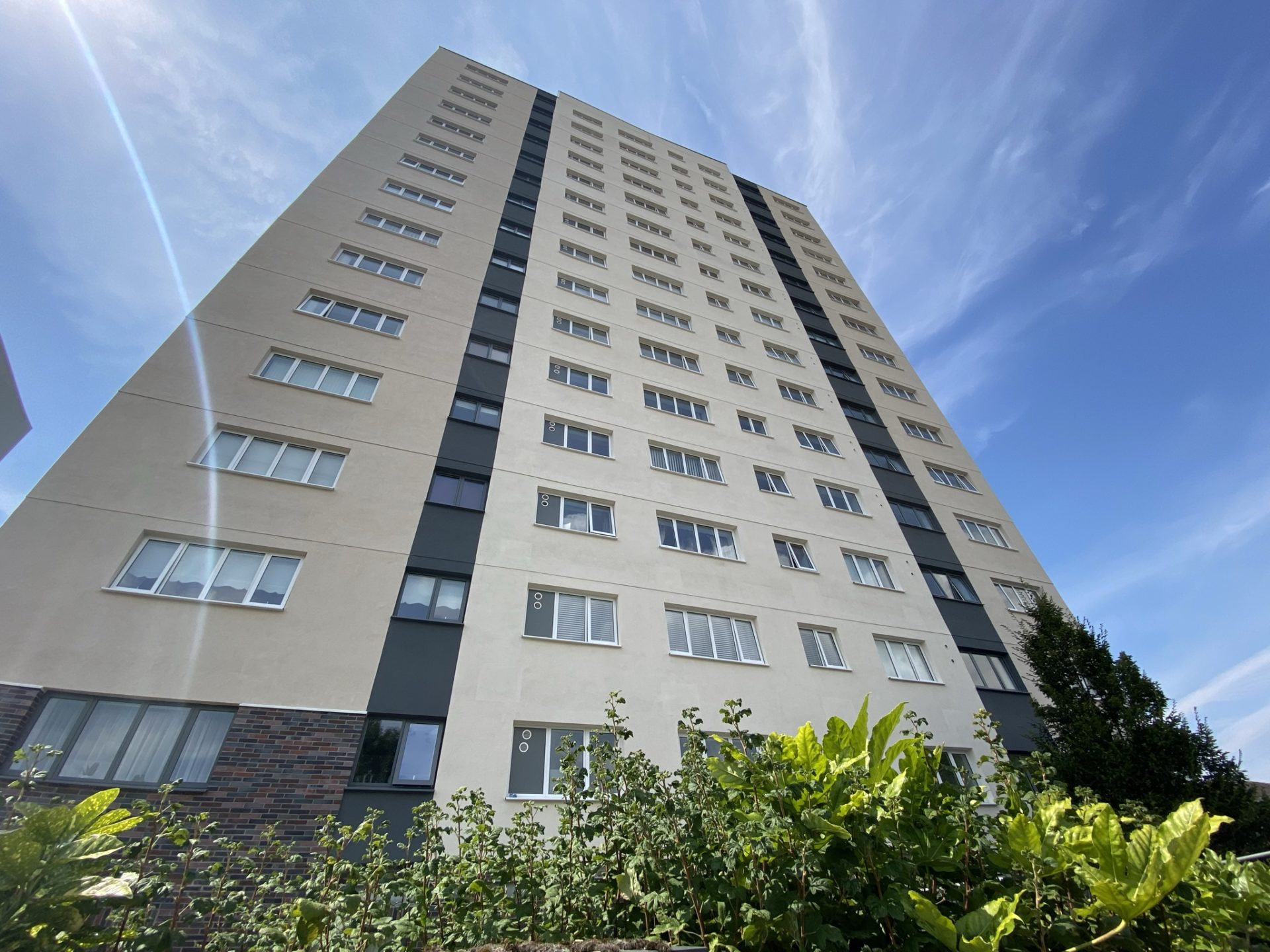INCA EWI Case Study: Oxford House, Bootle, Liverpool
Oxford House, Bootle
External Wall Insulation Case Study
Project Type: Refurbishment
Building Type: Residential – High Rise
Architect: Halsall Lloyd Partnership
System Designer: Alsecco
Installer: Ecogee
System & Finish: Alsecco Ecomin 300 and 400
Mineral Wool + Render & Brick Slips
U-value Achieved: 0.30 W/m²K
Oxford House in Bootle was built in 1968 and is a 16 x storey residential tower block housing elderly residents in 91 flats. The block was first refurbished with a phenolic insulation external wall insulation system approximately 15-20 years ago in order to make it more energy efficient. Very quickly it was clear that the system and installation were unsafe as render and boards began to come loose from the building. An interim measure involved pinning back the defective system with steel mesh.
In 2018 Alsecco were asked to assess and produce a technical and performance specification for the safe removal and reclad of the building. The work was undertaken in conjunction with consultancy WYG and architect Halsall Lloyd for One Vision Housing and Ecogee of Liverpool were the successful EWI installer with Carroll Build overseeing the complete external and internal refurbishment.
With considerable experience in refurbishing high rise buildings, the production of a safe and reliable system recommendation for the project, as well as the project-specific detailing, was relatively straightforward for Alsecco’s technical team and both WYG and One Vision Housing were given additional confidence by Alsecco’s DWU test for wind resistance of the system in what is an extremely exposed location.
In practical terms, the ability of Ecogee to level the building with the Ecomin 300 external wall insulation system should not be overlooked. Only when the failed system was removed was it apparent just how much the façade substrate ‘wandered’ and it took careful planning and patience of the installation team to achieve a level finish of the completed system.
The architect and local planners chose a combination of complementary colours for the silicone finish and with Alsecco’s help, sourced a linear, long format brindled clay brick slip for the ground floor, resulting in a finished scheme that has made a significant improvement to the immediate area and Liverpool skyline.
These EWI improvement works formed part of Sefton Council’s RetroFIT for the FUTURE project. Funding provided by European Regional Development Fund (ERDF) has enabled the scheme to deliver improved thermal efficiency, reduce carbon emissions, reduce fuel poverty and improve the aesthetic look of the homes that are benefiting from the project.
Externally the thermal envelope of the building has been improved by installing external wall insulation. The building has also benefitted from a new render system to give it a more modern and aesthetically pleasing look


